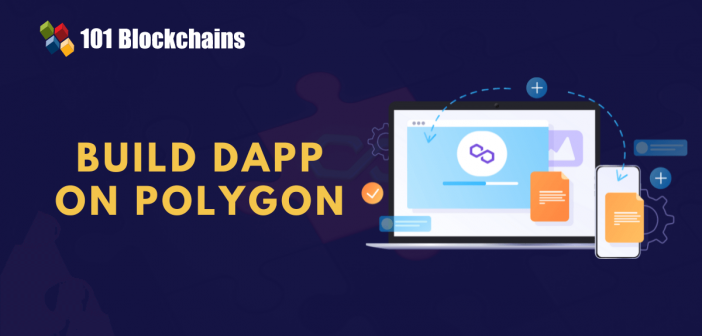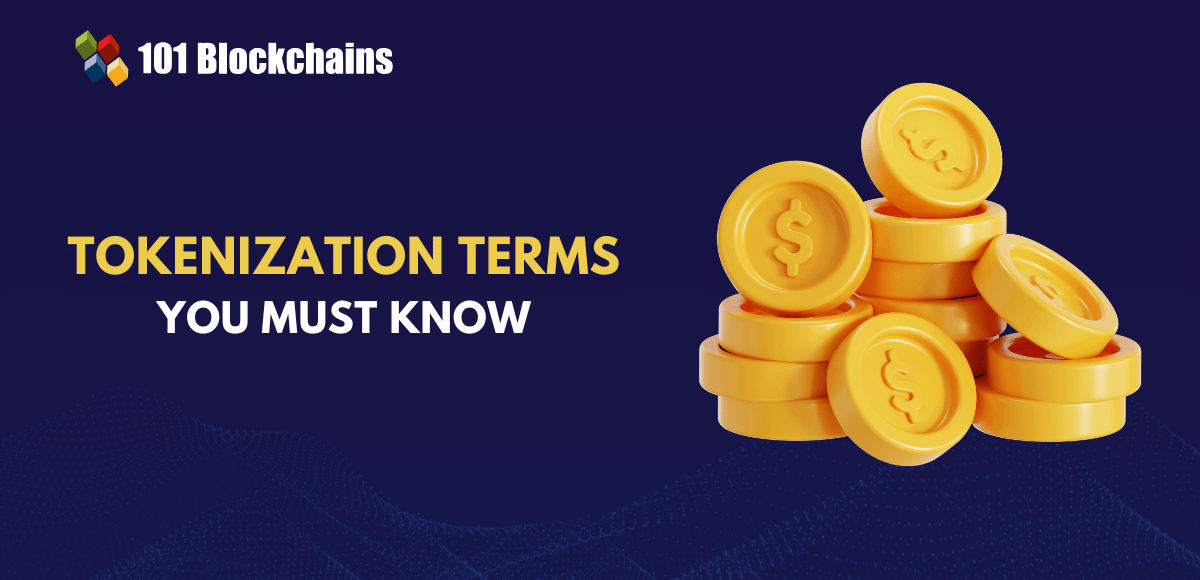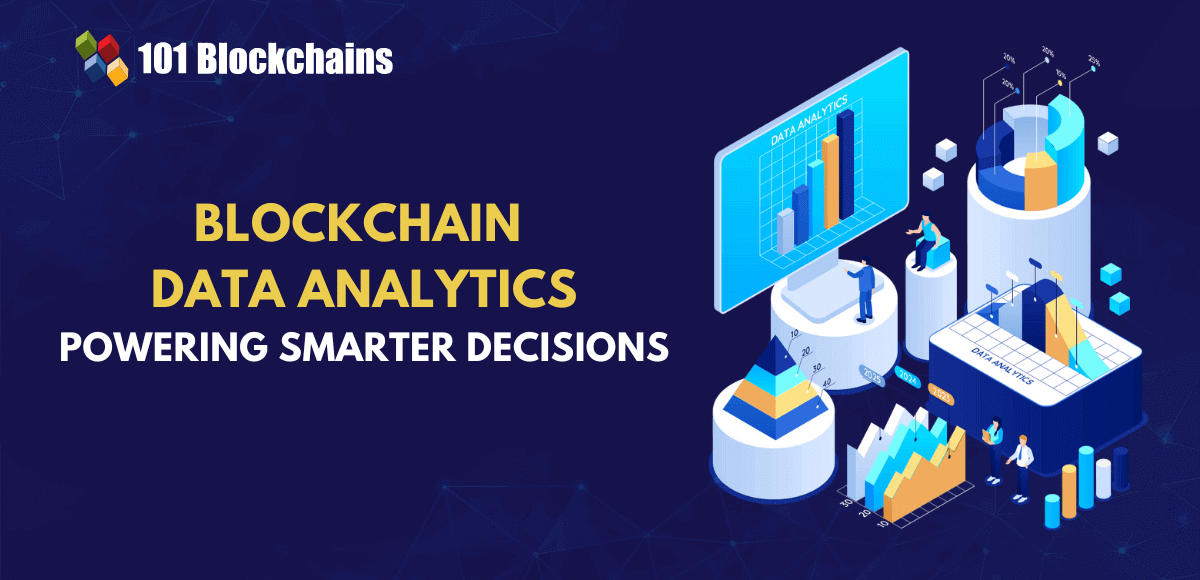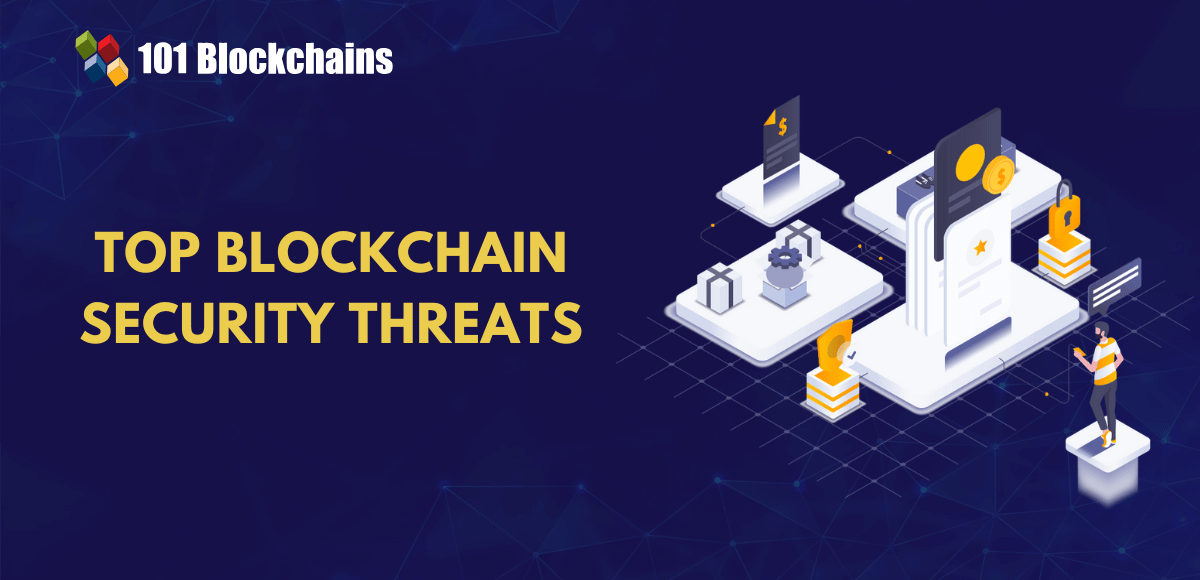Learn how blockchain truly works, master key definitions, and uncover what makes smart contracts so "smart." Dive into the fundamentals, gain valuable insights, and start your blockchain journey today!

- Blockchain
James Howell
- on March 03, 2023
How to Build a dApp on Polygon?
Ethereum is the most popular open-source ecosystem, which can provide the foundation for creating decentralized applications. It solved the limitations of Bitcoin blockchain by offering the development of smart contracts and solutions. However, the need for developing dApps on Polygon has become more profound owing to the limitations of scalability in Ethereum.
Polygon blockchain is a popular layer 2 scaling solution with the basis of Proof of Stake consensus. The blockchain network capitalizes on technological foundation of Ethereum along with significant value advantages. Polygon could facilitate better throughput, lower costs and extensive development options within the Ethereum ecosystem and EVM-compatible blockchains.
The need for guides to build dApp on Polygon blockchain has become an important highlight among career prospects for blockchain developers. Polygon has spontaneously garnered the attention of decentralized application developers owing to different features for dApp development. The developer tools and SDKs can help dApp developers create decentralized applications for business use cases. The following post offers a detailed guide for creating dApps on Polygon blockchain network with an understanding of the importance of Polygon.
Excited to develop a comprehensive understanding of Polygon web3 development? Enroll Now in the Polygon Web3 Development Course!
Why Has Polygon Blockchain Become Popular?
The first aspect in answers to “How to create a dApp on Polygon” would be an in-depth understanding of the significance of Polygon. Polygon blockchain was created as a scalability solution tailored for interacting with dApps and Ethereum-compatible blockchain networks. Previously referred to as the Matic Network, the Polygon blockchain is also known as the internet of blockchains of Ethereum. Why? Polygon aims to create an aggregated set of scalable solutions for creating an Ethereum ecosystem with multi-chain compatibility.
The distinct features of Polygon serve as an important highlight for Polygon dApp development with value advantages for dApp developers. One of the foremost highlights for defining Polygon as the popular choice for dApp development is the traits of layer 2 scaling solutions. It has been created with the design for facilitating interoperability with existing and emerging infrastructures of Ethereum.
In addition, it also offers an advanced framework featuring sovereign blockchains and sidechains. The layer 2 solution has been developed on the base chain, which can help in restricting the limitations pertaining to base chain. On top of it, Polygon blockchain plays a vital role in resolving the issues with layer 1 blockchain networks.
Another important highlight of Polygon blockchain for creating dApps on Polygon network is the design of Polygon as a plasma-based aggregator. It can serve as an effective framework for facilitating flexibility in off-chain development of decentralized applications. Plasma framework is one of the most crucial factors underlying the large-scale adoption of Polygon. It employs Plasma technology as Plasma Chains, which can reduce the transaction load on layer 1 blockchain networks.
Build your identity as a certified blockchain expert with 101 Blockchains’ Blockchain Certifications designed to provide enhanced career prospects.
How Does Polygon Solve the Problems of Ethereum?
If you are planning on developing a decentralized application, you might go for Ethereum. Well, it is obviously the gold standard among blockchain networks for dApp development. As a matter of fact, the origins of the dApp ecosystem you see today started from Ethereum. Why would you consider creating Polygon dApps when you can choose Ethereum? The answer points to one of the biggest setbacks for Ethereum, its popularity.
One of the biggest challenges for Ethereum is the limited throughput, managing only around 30 transactions per second. On top of it, the transaction costs are higher on Ethereum. Most important of all, the demand for dApp development on Ethereum creates network congestion which results in slowing down the network. Furthermore, the Ethereum blockchain lacks the option of interoperability, which cannot allow the interaction between Ethereum-compatible blockchain networks.
The problems with Ethereum have opened up the doors for Polygon dApp development, which addresses the issues. Polygon helps in creating EVM-compatible blockchain networks and ensures that they can interact with Ethereum. Polygon offers the flexibility of deploying secure blockchain networks in one click. The continuously expanding set of modules in Polygon offers support for developing custom networks.
The interoperability protocol of Polygon supports Ethereum and other blockchain networks to exchange messages with each other. Subsequently, Polygon can provide improvements in security through the modular security as a service approach. The adaptor modules on Polygon offer the assurance of higher interoperability among the existing blockchain networks.
Excited to develop a comprehensive understanding of Polygon? Enroll in Polygon Fundamentals Course Now!
Steps for Building a dApp on Polygon
The advantages of Polygon show why you need to find “How to build a dApp on Polygon” and learn more about it. Let us assume that you want to create a social media dApp like YouTube. First of all, you need to consider the important prerequisites before you start learning about dApp development on Polygon. The basic requirement for developing a decentralized app on Polygon is programming experience and skills in blockchain technology.
You must also have an in-depth understanding of blockchain fundamentals and smart contract development. Once you have the technical knowledge required for dApp development, you can start with the following steps for developing a social media decentralized app on Polygon.
Step 1: Gather the Important Requirements
What do you understand by ‘important requirements’ in dApp development? The journey for development of the best dApps on Polygon starts with a clear outline of the requirements. Every dApp development lifecycle starts with determining the important dependencies required for creating the dApp. Here is an outline of the important dependencies you need for creating the social media decentralized app on Polygon blockchain.
-
Node.js and Node Package Manager
Node.js is a crucial tool in the process to build dApp on Polygon as it is the JavaScript runtime environment. On the other hand, Node Package Manager or npm serves the role of a JavaScript package installer.
-
Truffle
The next important tool in dApp development is Truffle. It is one of the most popular blockchain development environments with an extensive set of features. Most important of all, Truffle can offer support for learning about developing Polygon dApps through template code. The boilerplate code or template code available on Truffle can help in beginning the process of creating the social media dApp. You can use the following command in the terminal for installing Truffle,
npm install –g truffle
-
Ganache
Once you have developed the dApp, you will need an environment for testing it. Ganache offers a private blockchain environment with a local blockchain and default accounts.
-
Metamask
Another vital requirement in Polygon dApp development points at the setup of Metamask. It helps users in accessing the Ethereum wallet through a browser extension and interact with decentralized applications. You can interact with Polygon blockchain through Metamask after adding a new RPC endpoint. Subsequently, you can open the Metamask extension and add the Polygon network. You have to fill up your wallet with MATIC tokens for deployment and testing purposes.
-
Tech Stack
The most important highlight in the requirements for creating the best dApps on Polygon is the tech stack. What are the programming languages, platforms and tools you will use for developing the dApp? The essential programming languages for dApp development include Solidity, HTML5, JavaScript and CSS3. Decentralized app developers have to use platforms such as Ethereum and Fleek, and the Polygon network. In addition, you must be fluent in the use of IPFS for designing storage mechanisms of your dApp.
Most important of all, Polygon dApp developers must have skills and knowledge in using React.js and Web3.js libraries. React.js serves as a crucial JavaScript library for creating the frontend of dApps on Polygon blockchain. On the other hand, Web3.js offers a collection of JavaScript libraries for enabling communication between smart contracts and the dApp frontend.
Step 2: Setting up the Project
The second step in the process for “How to create a dApp on Polygon” would point to setting up the project. You can avoid the version errors or complications associated with installation of supporting dependencies. How? The simple answer points to cloning a GitHub repository. The clone of the template dApp would have all the required dependencies and project files.
The first step in setting up the dApp development project on Polygon is the forking of the repository. It would create a copy of the project in your account. Now, you have to create a clone of GitHub and copy the project files to your machine. Remember that cloning the repository with offer you a local copy of the repository downloaded on the machine.
Subsequently, you have to access the folder featuring your desired code editor or Integrated Development Environment, such as Visual Studio Code or Remix. You should also follow the requirements for creating dApps on Polygon network by installing dependencies through the node package manager.
Step 3: Smart Contract Programming with Solidity
The social media dApp example aims at designing smart contracts for uploading videos featuring the IPFS video hash. It would also include programming for storage of videos, featuring the IPFS video hash and the title. In addition, the social media dApp smart contract would also include logic for listing videos according to video IDs on blockchain. Here are the different steps involved in creating the Solidity smart contract for this Polygon dApp development example.
- Specify the version of Solidity compiler you want to use and the name of the contract.
- Start the initial specification for video count as zero, with an unsigned integer data type.
- The contract name is represented by a character string data type, which can help in referring to the contract by name through Application Binary Interface.
- Create a mapping between a specific unsigned integer number and a video. The variable for videos would represent different data types of every element of the video.
- The next step in creating the smart contract for such dApps on Polygon is the creation of video data types alongside the video upload confirmation event.
- Develop a function for uploading videos, along with two arguments for title and video hash, within the function signature.
- In the final step of smart contract development, you have to add a video to the contract with the help of different variables. The variables refer to video count, title and video hash.
Understand the complete smart contract development lifecycle? Enroll In Smart Contracts Development Course Now!
Step 3: Migrating to Truffle
The process of building your dApp on Polygon starts with Truffle. It offers the boilerplate or template code with the following important project files.
test truffle-config.js migrations/1_initial_migration.js contracts/Migrations.sol
Truffle Migrations are an important highlight in the guides for how to build a dApp on Polygon as they help in deploying contracts to Ethereum and EVM-compatible networks. The JavaScript files take responsibility for staging deployment tasks and rely on assumptions of changes in deployment objectives.
Step 4: Developing the Frontend
After setting up the development environment to build dApp on Polygon blockchain, you have to focus on the dApp frontend. The most preferred tool for developing the frontend of your social media dApp is React.js. It loads in the form of a single HTML page and showcases all the components you define for your dApp. The important steps in developing the frontend of your Polygon dApp include the following,
- Importing all components and libraries alongside calling IPFS client for storing and retrieving files.
- Use the Async and Await functions in JavaScript to avoid errors in coding for the frontend.
- Preparing the file for uploading to IPFS and the function for uploading video files.
- Subsequently, you have to add other functions, such as changing the video files and the necessary components such as navigation bar, main page and footer.
- You can use the Navbar.js library to incorporate the logo of the brand, user account address, user profile and brand name.
Step 5: Deploying the dApp on Polygon
The final important step in creating a dApp on Polygon is the process of deploying smart contracts on Polygon blockchain. You can rely on the ‘truffle-config’ file for deploying the smart contract for your dApp. It is also important to configure the path of deployment to the Solidity file and contract ABI alongside defining the available networks. You can deploy the smart contract by using the following command,
truffle migrate –network matic
Once you have deployed the smart contract, you can run the React app on a local host by using the ‘npm start’ command. It would open up a Metamask extension asking for connecting the wallet to the dApp. You can connect the wallet to the dApp and continue uploading and sharing videos on your Polygon dApp.
IPFS Hosting with Fleek
The most critical aspect of Polygon dApp development is the use of decentralized hosting. You may think that IPFS offers the solution to problems of centralized servers. However, IPFS presents challenges in updating and modifying projects with similar IPFS hash. Therefore, Fleek IPFS hosting can help in deploying the dApp project, obtaining a link and SSL certificate and assigning the concerned domain. In addition, the Fleek IPFS hosting can enable developers to update the project by connecting to the GitHub repository.
Excited to learn the basic and advanced concepts of ethereum technology? Enroll Now in The Complete Ethereum Technology Course
Bottom Line
The detailed guide on “How to create a dApp on Polygon blockchain” offers a comprehensive outline of the methods for dApp development. Polygon can revolutionize dApp development by resolving the scalability and interoperability issues with Ethereum. As a layer 2 scaling solution, Polygon offers an extensive set of tools for deploying your dApps at lower costs and faster deployment rates.
The examples of best dApps on Polygon could serve as a guide for beginners to learn dApp development. However, you would need fluency in Polygon basics before pursuing dApp development on Polygon blockchain. Learn more about the Polygon Fundamentals training course on 101 Blockchains and how it can help you now.
*Disclaimer: The article should not be taken as, and is not intended to provide any investment advice. Claims made in this article do not constitute investment advice and should not be taken as such. 101 Blockchains shall not be responsible for any loss sustained by any person who relies on this article. Do your own research!






